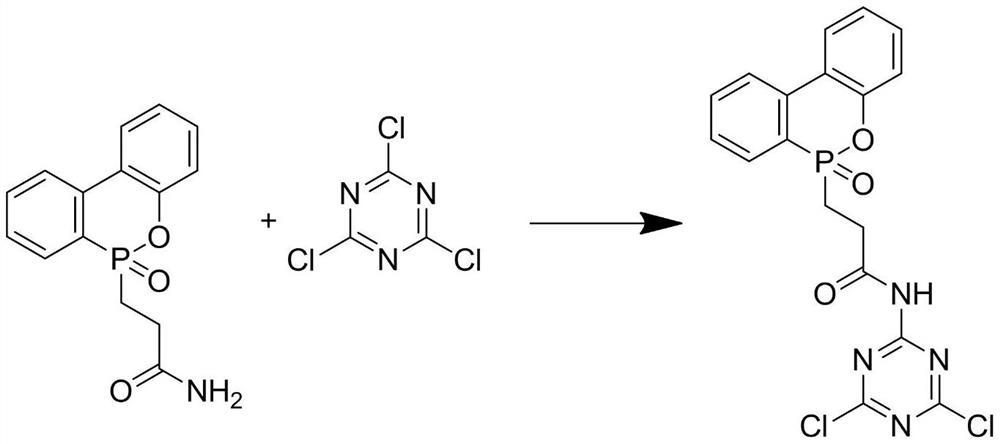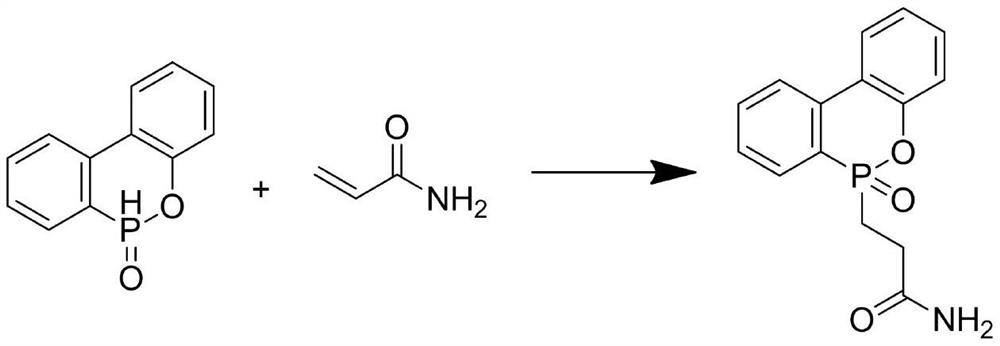High-flame-retardant antistatic yarn and processing method thereof
An anti-static and high flame retardant technology, applied in the manufacture of flame-retardant fibers, fire-retardant and flame-retardant filaments, and conductive/anti-static filaments. It can solve the problems of components destroying circuits, stimulating nerves, and easily generating static electricity.
- Summary
- Abstract
- Description
- Claims
- Application Information
AI Technical Summary
Problems solved by technology
Method used
Image
Examples
Embodiment 1
[0038] A high flame-retardant antistatic yarn, comprising the following raw materials in parts by weight:
[0039] 100 parts of polybutylene terephthalate / adipate, 1 part of polyethylene glycol, 0.6 parts of antistatic agent, 3 parts of flame retardant, 70 parts of wool fiber, 70 parts of cotton fiber and 100 parts of flame retardant treatment liquid ;
[0040] The high flame retardant antistatic yarn is processed through the following steps:
[0041] In the first step, polybutylene terephthalate / adipate and polyethylene glycol are vacuum-dried separately so that the moisture content is less than 200ppm. After drying, they are blended with antistatic agents and flame retardants. Under the conditions of 250°C and a spinning speed of 800r / min, the screw-type spinning machine performs melt spinning, and after cooling, oiling, pre-drawing, and winding at 700m / min are carried out to obtain polyester fibers;
[0042] The second step is to soak the wool fiber and cotton fiber in th...
Embodiment 2
[0056] A high flame-retardant antistatic yarn, comprising the following raw materials in parts by weight:
[0057] 130 parts of polybutylene terephthalate / adipate, 2 parts of polyethylene glycol, 0.8 parts of antistatic agent, 4 parts of flame retardant, 80 parts of wool fiber, 80 parts of cotton fiber and 150 parts of flame retardant treatment liquid ;
[0058] The high flame retardant antistatic yarn is processed through the following steps:
[0059] In the first step, polybutylene terephthalate / adipate and polyethylene glycol are vacuum-dried separately so that the moisture content is less than 200ppm. After drying, they are blended with antistatic agents and flame retardants. Under the conditions of 270°C and a spinning speed of 1000r / min, the screw-type spinning machine is melt-spun, and after cooling, it is oiled, pre-drawn, and wound at 750m / min to obtain polyester fibers;
[0060] The second step is to soak the wool fiber and cotton fiber in the flame retardant treat...
Embodiment 3
[0074] A high flame-retardant antistatic yarn, comprising the following raw materials in parts by weight:
[0075] 160 parts of polybutylene terephthalate / adipate, 3 parts of polyethylene glycol, 1 part of antistatic agent, 5 parts of flame retardant, 90 parts of wool fiber, 90 parts of cotton fiber and 200 parts of flame retardant treatment liquid ;
[0076] The high flame retardant antistatic yarn is processed through the following steps:
[0077] In the first step, polybutylene terephthalate / adipate and polyethylene glycol are vacuum-dried separately so that the moisture content is less than 200ppm. After drying, they are blended with antistatic agents and flame retardants. Under the conditions of 290°C and a spinning speed of 1200r / min, the screw-type spinning machine performs melt spinning, and after cooling, oiling, pre-drawing, and 800m / min winding are carried out to obtain polyester fibers;
[0078] The second step is to soak the wool fiber and cotton fiber in the fl...
PUM
 Login to View More
Login to View More Abstract
Description
Claims
Application Information
 Login to View More
Login to View More - R&D
- Intellectual Property
- Life Sciences
- Materials
- Tech Scout
- Unparalleled Data Quality
- Higher Quality Content
- 60% Fewer Hallucinations
Browse by: Latest US Patents, China's latest patents, Technical Efficacy Thesaurus, Application Domain, Technology Topic, Popular Technical Reports.
© 2025 PatSnap. All rights reserved.Legal|Privacy policy|Modern Slavery Act Transparency Statement|Sitemap|About US| Contact US: help@patsnap.com


